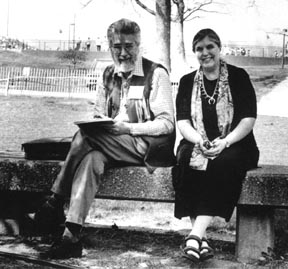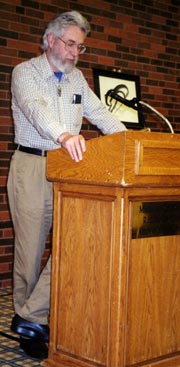Millikin University Haiku Writer Profile
William J. Higginson
|
William J. Higginson is an expert on renku and haiku. His life began in New York City but he later moved to New Jersey where he spent most of his childhood years growing up. As a teenager, Higginson attended the Massachusetts Institute of Technology for two years and then later joined the U.S. Air Force. In the Air Force he was assigned to a yearlong Japanese language graduate school at Yale University, which he completed with honors. There, haiku intrigued him. Higginson also completed his undergraduate studies, earning a bachelor’s degree with honors in English at Southern Connecticut State College in 1969. Today he leads his life as an extremely talented poet, translator, writer, speaker, teacher of writing, administrator, literary press and Internet author and editor, and editor and publisher of Haiku Magazine. He dedicates his life to Japanese traditions and inspires many others who follow in his footsteps. |
This profile of haiku writer, William J. Higginson, was researched, written and created by Lauren Omohundro. Scroll through the entire profile, or jump to any section: Studying the haiku I was able to obtain by William J. Higginson I feel confident in assuming his life experiences are portrayed through his writing. In his most famous book, "The Haiku Handbook: How to Write, Share, and Teach Haiku, he says, "Being small, haiku lend themselves especially to sharing small, intimate things. By recognizing the intimate things that touch us we come to know and appreciate our world and ourselves more. By sharing these things with others we let them into our lives in a very special, personal way." Higginson seems to form a strong connection with everyday moments, while expressing the good and bad aspects of life. I have noticed, ever since I have been reading his haiku that they almost take on a story-like progression by covering a variety of important areas and experiences. One of my favorites is as follows:
I feel that this haiku says a lot about who and what he is. It expresses the dedication that he has to his work. When he looks up from doing his writing he realizes that the sun has come up and it is no longer nighttime. He does not realize this because he has been working very intensely. Higginson is expressing his diligence and dedication through this haiku. It is necessary to take a closer look into his haiku because he sees the art of haiku as being very sacred, selecting each word carefully and precisely, heightening the critical meaning. In one of his quotes he said, "The primary purpose of reading and writing haiku is sharing moments of our lives that have moved us, pieces of experience and perception that we offer or receive as gifts. At the deepest level, this is the one great purpose of all art, and especially of literature." William J. Higginson is a master of the haiku tradition. His works have inspired many people and affect people deeply and unexpectedly. He writings go beyond just the normal and force his readers to look beyond the surface. The dedication and diligence that he has displayed through his many excellent works proves him to be one the best haiku artists. —Lauren Omohundro |
|||||||
|
William
J. Higginson has received a number of grants, awards, and other
recognitions including: Member,
Selection Committee for the Masaoka Shiki Prizes, Ehime Prefecture
Cultural Council, Japan (2000). Merit
Book Award, Haiku Society of America, for publication of Red Fuji:
Selected Haiku of Yatsuka Ishihara (1998). Translation
Grant, Witter Bynner Foundation for Poetry (1994). Inducted
into the New Jersey Literary Hall of Fame (1989). Member,
Governor's Task Force on Literacy in the Arts, a New Jersey Educational
Commission (1987-1989). Merit Book Award, Haiku Society of America, for publication of The Haiku Handbook: How to Write, Share, and Teach Haiku (1986). Writing Fellowship in Poetry, New Jersey State Council on the Arts (1977). Merit Book Award, Haiku Society of America, for critical writing and publication of Itadakimasu: Essays on Haiku and Senryu in English (1974, one of the first Merit Book Awards). Prize for Best Haiku of the Meeting, Haiku Society of America (May 1969). |
|
|||||||
|
Additional Web Links and Resources THE "WEBOLUTION" OF HAIKU. Higginson's keynote address at the Global haiku Festival at Millikin University. New Mexico Writer's Contact Directory—Higginson Humor in Basho's Haiku—Higginson article at Haijinx |
| © 2001, Dr. Randy Brooks• Millikin University |
last
updated 8/16/01 • about this web site
|

